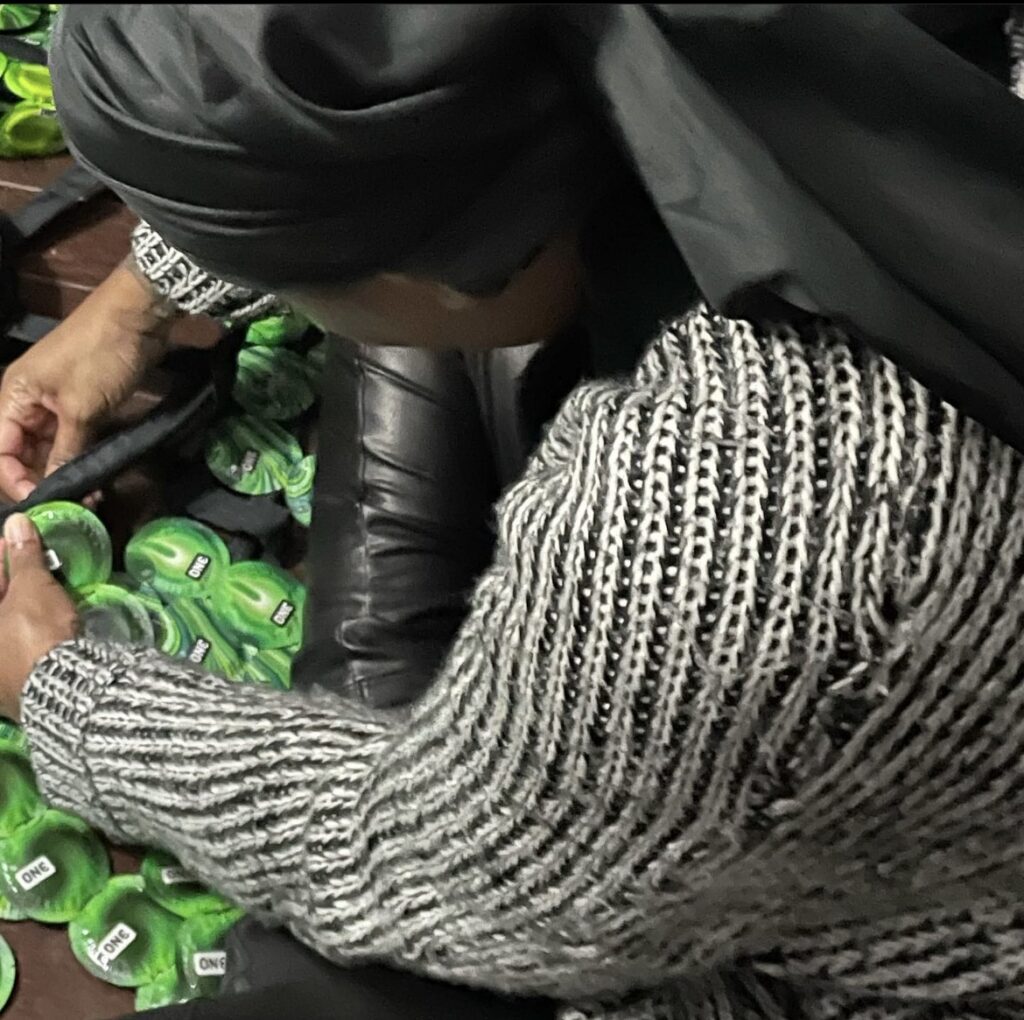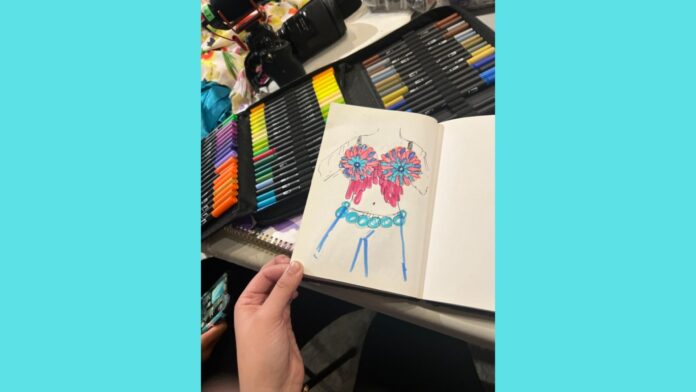Prevention Meets Fashion is hosting its 7th Annual Condom Fashion Show — an event that bridges sexual health and creativity by turning what’s typically worn in private into outfits for the catwalk. The theme for the Feb. 17 event, which will be held at Asian Arts Initiative is “The Call for Comprehensive Sex(uality) Education (CSE).” Founder and executive director, Nhakia Outland, MSW, said that sex ed should cross the entire lifespan — not just K-12 students — and address the unique needs of each individual.
“Comprehensive sex education focuses on the whole person,” underlined Outland, who infuses her social work skills and practices into sex education programs. “It focuses on the different intersections of the person.”
When it comes to school programs, Outland noted the need to include more information that focuses on queer relationships, consent, bodily autonomy and boundaries, human anatomy, and risks in a way that doesn’t perpetuate stigma. She also believes schools should allow educators to utilize instructional models, menstrual products, and other teaching tools during presentations rather than require euphemisms — like fruit, which Outland has been asked to use in the past.
Outland talks with caregivers about how she educated her own kids to build trust with people who are skeptical about their children’s readiness for these kinds of conversations. She approached educating her children the same way she approaches the classroom.
“I have kids that are grown, and I have a teenager. She’s been designing with Prevention Meets Fashion since she was about seven and she’s 14 now,” Outland said. “Me being an openly sex-positive mom normalizes that for a lot of families who come with those reservations about talking to their youth of all ages about comprehensive sex education.”
It’s not just sex education as a broader topic that people shy away from. There’s stigma and embarrassment that often accompanies conversations about condoms too — and PMF’s annual condom fashion show alleviates the awkward tension that surrounds the topic. It’s a non-traditional platform that can be more approachable than lecture-oriented presentations.
Featured apparel can use as many as 1,000 condoms. Items are constructed with expired and unusable condoms, condom boxes, and other sexual health products as well as more traditional fabrics and materials. Participants utilize various techniques such as patchwork, weaving, crocheting, and recycling household items to create wearable designs that incorporate sexual health products.
“Sometimes you can’t even tell that they’re condoms until people get up close,” Outland said.

Past designers have used their platforms to communicate about justice issues. This year, Outland, who also designs a garment every year, is using purple condoms to bring attention to the themes explored in last year’s film “The Color Purple.”
Gabby Rodriguez, a 20-year-old queer and Latinx artist who has never sewed or created clothing before, has spent over 30 hours hand-sewing approximately 100 condoms into their garments, and those items still need some finishing touches.
“I chose to focus on anatomy,” Rodriguez said. Their model, a man, will wear a floral-inspired bra top layered with pink, purple and blue condoms in a shape that represents breasts. A hat and flared bottoms will mimic the same movement and textures to echo the breast theme.
“I think flowers represent strength and growth, and they are just beautiful to look at,” said Rodriguez, who spoke of women’s bodies being sexualized and wanting to explore gender in the presentation of their project on a male model. “I want [my pieces] to communicate a type of beauty that’s like empowerment.”
“My sex education was very — small,” said Rodriguez, who attended high school in Philadelphia and was informed about STIs and prevention but otherwise “had basically no opportunity” to learn about other sexual health topics from their educators. Most of their sex education was discovered on their own or through conversations with friends.
Outland started Prevention Meets Fashion as a way to connect with youth who weren’t actively seeking services at the organization she worked for but still needed support. That initiative grew into today’s nonprofit organization which continues to provide sex education and training but also offers support groups — including one that focuses on the intersection of clothing and trauma, gender-affirming and STEAM-based fashion exploration, and various additional resources.
Those earlier shows mostly connected the families of participants who attended to support their young people. The projects helped to destigmatize conversations about condoms, sexual health and anatomy — helping young people talk to their loved ones about these important topics. One previous participant brought their grandparents to a show and learned that they’d used Saran wrap to try to protect themselves when they were younger. Discussions about their grandparents’ experiences with sexuality helped them feel more comfortable coming out.
Dialoguing with loved ones across generations is still an important piece of what happens at the event — and family initiatives have expanded. There will be storytime and kid-focused presentations on bodily autonomy as well as resources for caregivers and families who want to continue these kinds of conversations at home.
In more recent years, the show has also caught the attention of more social workers, therapists, and college students — which led Outland to develop a continuing education track.
“This is the first year we’re offering CEUs,” she said. “We decided to provide continuing education units because I am a social worker. We were founded by social workers. Most of our interns are social workers or human sexuality majors.”
Professionals seeking those credits will learn how sex, sexuality and comprehensive sex education intersect with their roles as social workers. Outland said this topic is relevant no matter a professional’s specific area of expertise or targeted population.
“Sometimes we like to silo the sex education part or the sexuality part [of ourselves and our work] when we should be including it — when it should be a piece of our practice,” she said. “Because whether we realize it or not, people’s sexuality and issues with or around sex education or lack of sex education all intersect with things like mental health, maternal health, gender-based violence.”
“They’re going to learn about how and why we need to advocate against anti-LGBTQ bills, what it means that Roe v Wade has been overturned,” she said about the “macro” way social work intersects with advocacy. Another topic that will be explored is teen dating violence — an aspect of comprehensive sex education that is often overlooked.
“It has a lot to do with recognizing unhealthy and healthy relationships. What do they look like? How do you recognize teens that are experiencing violence in this way?” she said, explaining that physical and emotional abuse, coercion and other negative interactions can become major problems for young people. “All of these things that we think just adults are dealing with, teens are actually dealing with it too.”
“I’m not just a founder and executive director. I’m also a community member,” said Outland, who is a Black, queer woman. “So I engage in the community, and I find out what the community needs.”
“Prevention Meets Fashion is not for everyone,” she underlined. “But the folks that do come here understand why we need to take up space and understand why we need to to be a staple in and around other community-based organizations.”
Prevention Meets Fashion’s 7th Annual Condom Fashion Show & Educational event will be held at 2 p.m. Feb. 17 at Asian Arts Initiative, 1219 Vine St. To learn more about PMF, visit preventionmeetsfashion.org. To register for the event, visit https://bit.ly/3I1MjMm.
